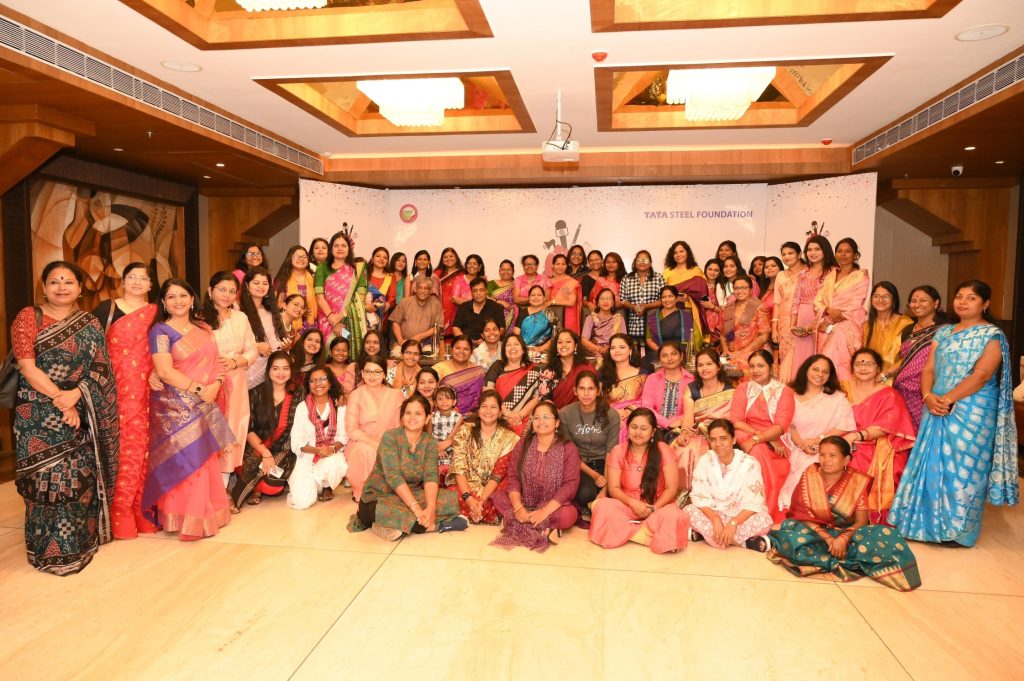
Bhubaneswar Mayor (Image credit X @MayorBBSR)
By Pradeep Kumar Panda
Bhubaneswar, March 8: No household, no society, no state and no country can progress without empowering its women. Women constitute half of the world’s population. Still we witness wide spread gender discrimination in every sphere. Sustainable Development Goal 5 gives clarion call to world for achieving gender equality.
World’s largest economies are lagging behind in developing female leaders. Recent global study of almost 22,000 organizations worldwide shows that very few have reached 30% on boards. Recent data from EY & The Peterson Institute for International Economics reveals that companies in just five countries have at least 30% senior women executives, with only Norway exceeding the 30% mark for women on company boards. The research also shows that companies with at least 30% women in leadership can achieve up to a 6 percentage point increase in net margin. In the largest global study of its kind, the research focused on data from almost 22,000 publicly traded firms across 91 countries.
World Bank Data reveals 70% of the 1.2 billion people living in poverty are female. Women do more than 67% of the hours of work done in the world but earn only 10% of the world’s income and own only 1% of the world’s property. The value of unremunerated work was estimated at about $16 billion, from which $11 billion represents the invisible contribution of women. Women are paid 30-40% less than men for comparable work on an average. 60-80% of the food in most developing countries is produced by women. Women hold between 10-20% managerial and administrative jobs. Women make up less than 5% of the world’s heads of state.
Although men still have the most privileges with regard to access to land, credits and other agricultural inputs, one can’t speak of Agriculture without Women. Women play a pivotal role in the agriculture all over the world, thus there is no people´s Agriculture without a central and leadership role for women. It is well received that Women are strong drivers of Agriculture change in farming and consumer communities. It is interesting to introspect what role Agriculture play in improving the lives of women? Data reveals that there are 500 million small scale farm families around the world, and 70% of the agricultural work on these farms is done by women.
Data of Food and Agriculture Organisation (FAO) illustrates that women could increase their productivity by up to 30% if they had the same access as men to productive resources. Closing the gender gap, during the 2014 International Year of Family Farming, could reduce the number of the world’s undernourished people by 12-17%. It is long known that women hold important agriculture and food knowledge, and that they are a force pushing for agro-ecological changes that lead to resilient farming.
Where men tend to focus more on economic gains, women’s ultimate concerns tend to food sovereignty and nutrition, social stability and peace, and the conservation of biodiversity and natural resources. Women, who dominate small-scale farming in communities, can be empowered in several ways.
Agro-ecology agriculture is economical, making use of available resources, meaning women who often do not have access to financial resources can have a debt free livelihood. Women are integral part of agriculture and make major contribution to environment and economy. Their indomitable urge to explore into unknown is the key to their success. They always thrive for innovation and quickly adapt to new technology.
The reality of women’s lives remains invisible to men and women alike and this invisibility persists at all levels beginning with the family to the nation. Although geographically men and women share the same space, they live in different worlds. The mere fact that “Women hold up half the sky”- does not appear to give them a position of dignity and equality. True, that over the years women have made great strides in many areas with notable progress in reducing some gender gaps.
Yet, the afflicted world in which we live is characterized by deeply unequal sharing of the burden of adversities between women and men. Sprawling inequalities persist in their access to education, health care, physical and financial resources and opportunities in the political, economic, social and cultural spheres. Gender inequality holds back the growth of individuals, the development of nations and the evolution of societies to the disadvantage of both men and women.
Gender issues are not simply talking about women’s issues. Understanding gender means understanding opportunities, constraints and the impact of change as they affect both men and women. The impact of inequality is reflected in the status of women worldwide and in India.
A gender and empowerment framework has to depart from the distinction between the concepts of gender and women. ‘Women’ is not gender, but women are a category of people. Gender is the socially constructed difference between women and men; it is not so much about biological differences between women and men, but about how society gives meanings to these differences in femininity and masculinity, and the power relations and dynamics that come about as a result of this.
Knowing what women do in a chain or household, or how women or men spend their income is a first starting point, but does not necessarily say anything about gender. Bearing the woman/gender distinction in mind, empowerment can be defined as “a process by which those who have been denied the ability to make strategic life choices acquire the ability to do so. Empowerment is about changing gender relations in order to enhance women’s ability to shape their lives. Empowerment is hence about a process of change, and encompasses both the question of what is changing and the question how that change is being valued.
A substantial literature has studied these issues and found clear evidence of a correlation between mothers’ education and earnings, and child welfare, particularly child health. Moreover, the correlation with mothers’ education and earnings is almost always found to be stronger than the corresponding correlation with fathers’ education and earnings. However, correlations are often misleading. In this instance, there are two fundamental problems with the interpretation of the results.
First, a woman’s education, earnings, or political participation may be correlated with unobserved dimensions of her ability, family, or community background. To the extent that these unobserved factors directly determine child health, the correlation does not indicate the causal effect of raising a woman’s education, earnings, or political participation.
It is important to recognize that the very fact that women are typically less likely to get an education, earn an income, and participate in political decisions is likely to make this bias stronger for women than for men. Likewise, children might do better in countries or regions where women’s political participation is greater because these places are otherwise more favorable environments.
Second, the comparison between the coefficients of husbands’ and wives’ education or earnings might be obscured by a correlation between wives’ education or earnings and unobserved characteristics of husbands for two reasons: On the one hand, more educated or richer women may be able to marry men who care more about their children.
On the other hand, the observation that, after controlling for total resources, income in the hands of women is associated with more desirable outcomes than income in the hands of men may reflect unobserved attributes of a man that directly influence child outcomes.
For example, if he is progressive enough to allow his wife to seek employment, then this same progressive attitude may make him treat his children better. To get around these problems, researchers have exploited specific circumstances where the distribution of power, education, or earnings of women and men changed for reasons that had nothing to do with their individual choices. These situations allow us to approximate what would happen if women’s empowerment policies were put in place and applied to everyone, not only to very special families.
There is much evidence to suggest that in a world of limited resources, gender inequality indicates that an economy is operating below potential. Prof. Berta Esteve-Volart estimates that the economic costs of discrimination against women in the labour market are large: a 10% increase in the female-to-male ratio of managers increases GDP per capita by 2%, while a 10% increase in the female-to-male ratio of total workers increases GDP per capita by 8%. India’s next phase of economic growth will require a productive investment, not in terms of larger public spending but in terms of achieving gender equality.
Empowering and educating girls and women and leveraging their talent and leadership fully in the global economy, in politics and in society are fundamental elements of the new models required for the country for the “take-off” (below) – that the classical economist Rostow refers to in his ‘Stages of Economic Growth.’
Subscribe: youtube.com/@TheRaisinaHills Join: https://whatsapp.com/channel/0029VaFAp9b60eBiuA8v1x0s
Evidence suggests that lower access to productive inputs, such as land or capital, is one of the root causes of the productivity gender gap. Moreover, the information age (technology), has offered myriad of opportunities to women to harness their skills. Also, access to economic opportunities (labour), enhancement of progressive social norms and microfinance for women (cultural and institutional factors) all enhance capabilities. It has been observed by many economists that effective and well-chosen policies can help enhance the speed at which outcomes for women catch up to those of men. The focus of the development agenda should then by on enhancing a woman’s capability. This abridges the gender gap and assures not only economic growth but economic development.
Women’s empowerment and economic development are closely interrelated. While development itself will bring about women’s empowerment, empowering women will bring about changes in decision-making, which will have a direct impact on development. Contrary to what is claimed by some of the more optimistic policy makers, it is, however, not clear that a one-time impulsion of women’s rights will spark a virtuous circle, with women’s empowerment and development mutually reinforcing each other and women eventually being equal partners in richer societies.
On the one hand, economic development alone is insufficient to ensure significant progress in important dimensions of women’s empowerment, in particular, significant progress in decision making ability in the face of pervasive stereotypes against women’s ability. On the other hand, women’s empowerment leads to improvement in some aspects of children’s welfare (health and nutrition, in particular), but at the expense of some others (education).
This suggests that neither economic development nor women’s empowerment is the magic bullet it is sometimes made out to be. Equity between men and women is only likely to be achieved by continuing policy actions that favor women at the expense of men, possibly for for a very long time. This abridges the gender gap and assures not only economic growth but economic development.





